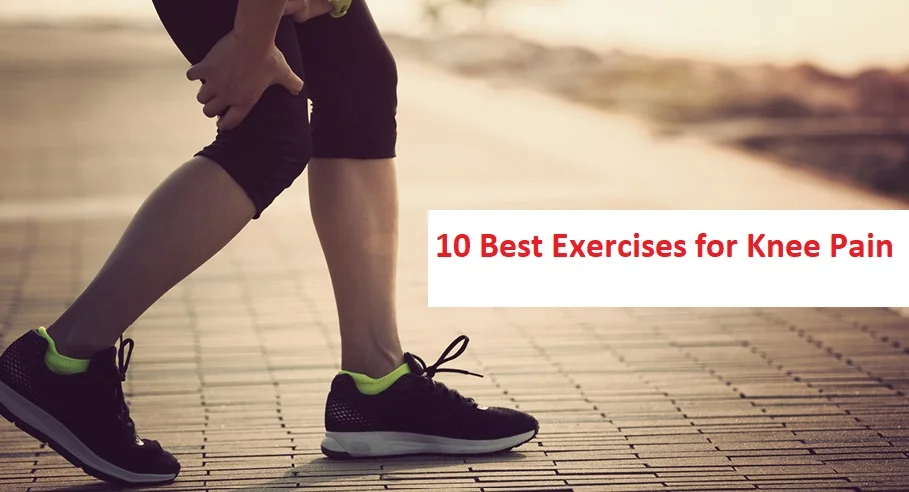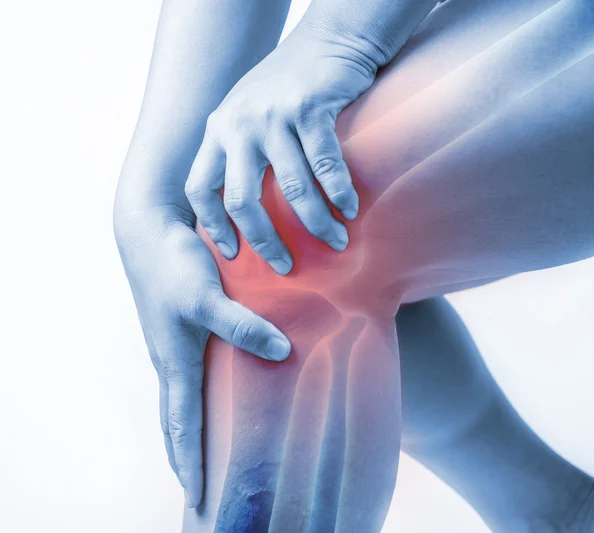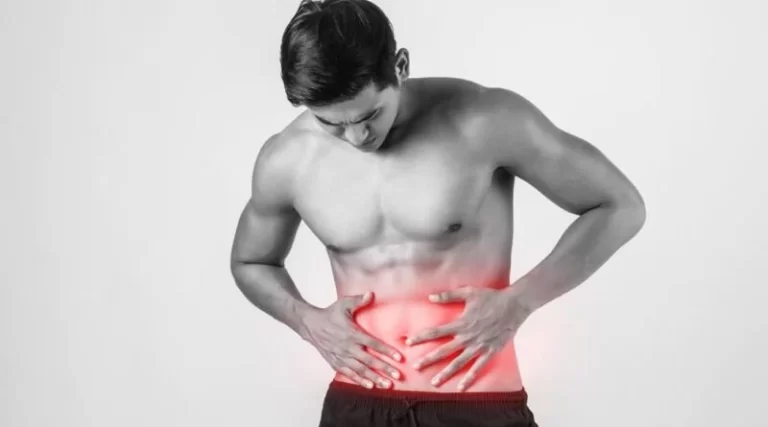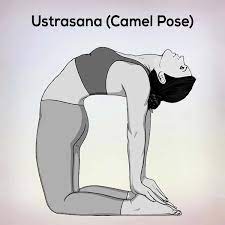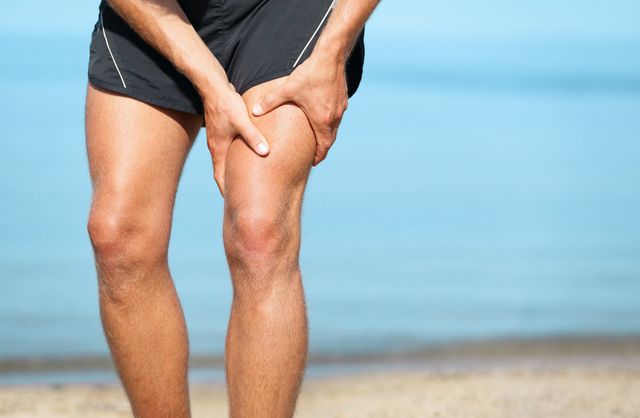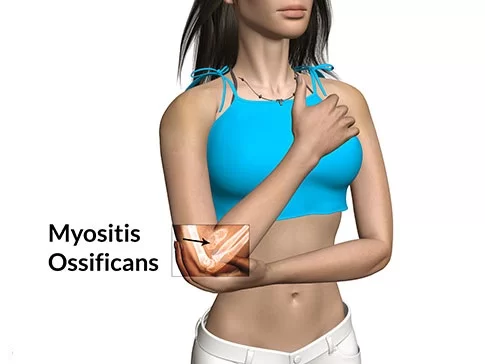10 Best Exercise For Knee Pain
Table of Contents
Introduction
If you are suffering from knee pain, it can be challenging to know what exercises are safe and effective for you. However, there are exercises that can help improve knee pain and strengthen the muscles around the knee joint. In this article, we will explore the 10 best exercises for knee pain, including stretches and low-impact exercises that can be done at home or at the gym.
Exercise provides strength and flexibility to the muscle. If your knee pain is due to an injury, surgery, or arthritis, such as a condition physiotherapy provides gentle stretching and strengthening exercises that may help decrease the pain while also improving your flexibility and range of motion (ROM).
Gentle stretching and strengthening exercises can improve the strengthening of the muscles which surround your knee joint. when your Knee muscle becomes powerful, it can help to reduce the stress on your knee and help your knee joint move more easily.
Before you start any exercise program at home for knee pain, you should make sure to talk to your healthcare or physical therapist to make sure the exercises are safe for you. Depending on your condition. healthcare may recommend some specific exercises according to the condition.
Symptoms of Knee pain
Symptoms of knee pain depend on the location (where knee pain is present) and severity of knee pain(mild, moderate, and severe), depending on the cause of the problem. Signs and symptoms which knee pain include:
Swelling and stiffness.
Redness and warmth to the touch.
Weakness or instability.
Popping or crunching noises.
Inability to fully straighten the knee.
Causes of Knee Pain
overuse
osteoarthritis
tendinitis
bursitis
meniscus tears
sprained knee ligaments
10 Best Exercise for Knee Pain
Straight Leg Raises

Straight leg raises exercises increase the strength of your quadriceps muscle, which can support your knee, even if you currently have knee pain.
First, you should sleep in a supine position and perform this exercise on a mat on the plinth.
then you should flex one knee and keep that same foot anchored on the mat or plinth.
then you should raise the leg which is not flexed same height as the flexed knee.
Make sure to keep your pelvis stabilized and use your abdominal muscles. Your healthcare may recommend repetitions for each leg which are according to the condition.
you should perform this exercise 15 -20 times from the affected leg.
Calf stretching
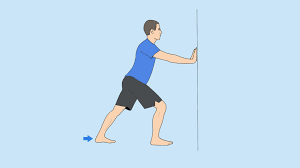
This stretch is considered the muscles in your lower leg, specifically your calf muscles(gastrocnemius and soleus).
First, you should Stand facing a wall.
Then you should Place your hands on the wall and move one foot back as far as you can comfortably with the position. Toes on both feet should be facing forward, heels flat, with a slight flex in your knees.
Lean into the stretch and hold this position for 30-60 seconds. You should feel the stretch in your back leg doesn’t give overstretched to the calf which increases the pain.
Change legs and repeat.
performed this stretch three times per set for both legs.
Hamstring stretch
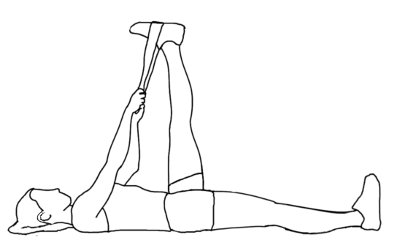
This stretch is considered your hamstring muscles, the muscles situated at the back of your thigh.
You should feel this stretch in the back of your thigh or in the hamstring muscle and up to the base of your glute muscles. If you flex your foot, you may also feel the stretch in the hamstring muscle.
For hamstring stretch, you can use a mat or plinth to add a soft cushion under your back.
Lie down on the plinth or mat and straighten both legs. if you are more comfortable, you can flex both knees.
Place your hands under your thigh, but not above the knee place them below the knee, and give a mild pull or stretch your knee toward your chest until you feel a mild or slight stretch. The hamstring stretch should not be painful.
Hold this position for 30 seconds.
back to the starting position and perform it on another leg.
Repeat three times on each side.
Prone leg raises
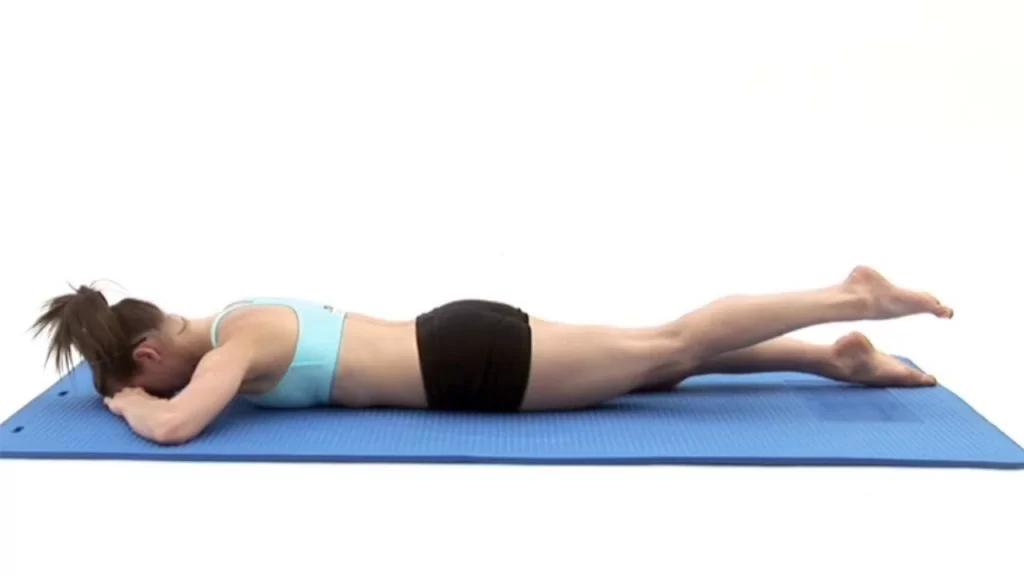
This exercise considered your hamstrings muscle as well as your glutes muscles. As this exercise gets easier to perform, you can add weight to the ankle joint(by theraband)and gradually shift on to light to a heavier weight as you increase the strength of knee muscles.
For this exercise, you can use a mat to add cushioning or a plinth to avoid a hard floor.
first, you can Lie on your stomach with your legs straight out behind you. You can let your head rest on your arms if you don’t feel comfortable.
include your gluteus muscle and hamstring muscles for your left leg and lift your leg as high as you comfortably can without causing pain. Be sure to keep your pelvic bones stabilized by physiotherapy throughout this exercise.
Hold this position for 5 seconds then back to the starting position.
back to your leg in starting position, rest for 3 seconds, then again repeat.
perform 2 to 3 sets of 15 repetitions for each leg.
Side leg raises
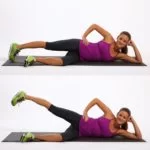
This exercise considered your hip abductor muscles and your glutes muscles. Your hip abductor muscles, situated on the outside of your hips, help for an activity for standing, walking, and rotating your legs with ease. Strengthening these muscles can prevent and reduce pain in the hips and knees.
As this exercise gets easier to perform, you can add a weight on the ankle joint and gradually shift up to a heavier weight to easy weight as you build strength in your leg muscles.
first, you should Lie on your side with your legs placed on top of each other. crib your head in your hand, and place your other hand on the mat or plinth in front of you. while this exercise you have to stabilize the pelvis.
then gradually Raise your top leg as high as you comfortably can. You should feel this on the performing side of your hips.
Pause at the top for 5 seconds, then put back your leg.
performed this exercise 2 to 3 sets of 10 repetitions for each leg.
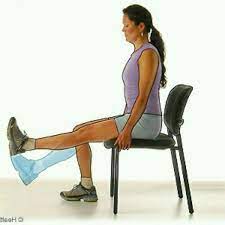
Leg extensions
for this exercise use your own body weight, rather than a weighted machine or weight cuff, to strengthen your quadriceps muscle.
To do this exercise first you should Sit up on a long chair which keeps your leg hanging or plinth.
Look straight ahead, contract your thigh muscles, and extend one leg as high as possible you can weight cuff for strength add without raising your buttocks off the chair.
Pause the position for 5 seconds, then back your leg to the starting position.
performed leg extension exercises 3 to 5 sets of 10 repetitions for each leg.

Hamstring curl
The standing hamstring curl considers your hamstring muscle and glutes muscle. A hamstring curl requires good core strength to keep your upper body and hips moving. you can perform in a prone, standing, or sitting position.
first, you should Stand facing a wall or use a chair for support. Your feet should be hip-width apart.
then you should Lift one foot up, extend your knee, and raise your heel toward the ceiling. perform as far as you can, while keeping your upper body still and hips pointing forward.
Hold for 5 to 10 seconds.
Relax and back to the starting position.
performed 2 to 3 sets of 10 repetitions for each leg.
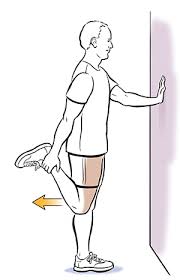
Quadriceps stretch
Quadriceps stretch specifically considered your quadriceps muscles, the muscles present at the front of your thighs. Performing this move can help increase the flexibility in your hip flexors muscles and quadricep muscles.
you should Stand next to a wall or use a chair for support. Your feet should be shoulder-width apart.
flexed one knee so your foot goes up toward your glute muscles.
hols your ankle and gently pull it toward your glutes muscle as far as you can comfortably.
Hold this position for 30 or 60 seconds which is compulsory.
after that return to the starting position and change legs.
Quadriceps stretch Repeat 3 times on each side.
Terminal Knee Extensions (VMO Exercise)
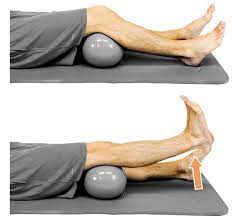
First you should for this exercise you require one medium-sized ball. take a supine lying position on your back on the mat or plinth and place the ball under your knee joint.
Then gradually lift one heel off the floor till the knee joint is straight.
Hold this position straight knee for 5 to 10 seconds then gradually lower the leg.
Repeat this terminal knee extension exercise in 2-3 sets of 10 repetitions, 2 times daily.
Gradually increases the repetition if you improve your strength after a few days.
Active Heel Slide Exercises
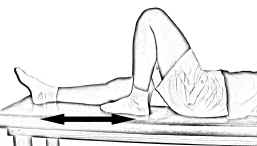
First, you should for this exercise Lie flat on your back on the mat or plinth with place your arms at your sides
Now you should gradually Slide your heel toward your buttocks. Hold this position for 5 to 10 seconds, Then gradually straighten the leg.
Only flexed your knee to a limit that is pain-free range and comfort range.
Repeat on the other leg.
You may feel a mild stretch in or around your knee, but it must be pain-free.
For each exercise, perform 10 to 15 repetitions. Rest for 2 to 3 minutes between exercises.
Gradually increases the repetition as you improve your strength after a few days.
Precautions During Exercise
- Stop doing exercise if you feel any discomfort while exercising.
- Avoid performing box jumps if you feel any knee pain.
- Avoid stepping so far that you feel pain or discomfort in your knee.
- Avoid jerky Knee movement during exercise.
- Perform the exercise in a proper manner, give proper stretch, give proper hold, and give proper repetition.
- Wear loose clothes while exercising which provide free movement to your body.
- Give the stretch to the tight muscle feel uncomfortable but you should never feel stabbing pain or sharp pain.
- You should never hold your breath during exercise. during exercise, you should take a deep inhale and slowly exhale. holding the breath increases the tension in your muscle which leads to increased blood pressure.
Knee pain exercise to avoid
The worst exercises for people with bad knees you should avoid such as full-arc knee extension (using the machine at the gym), deep lunges, full squats, and Hurdler’s stretches as these exercises give excessive or abnormal pressure on the knee joints, increasing pain and which leads to injury. If not performed perfectly, these exercises may also create the risk of injury. The great exercises for good strength, flexibility, and knee function included partial squats, step-ups, side lying leg lifts, inner-thigh leg lifts, calf-stretch, straight leg raises, short-arc leg extensions, and hamstring stretching.
When did you not do knee exercises?
- If your doctor advised you should take a rest for few days.
- If your leg bone is recently fractured.
- If you feel knee pain during any exercise suddenly consulted with a doctor.
- Stop doing exercise if you feel any knee discomfort while exercising.
- Avoid stepping (stair climbing) if you feel discomfort in your groin.
- Avoid jerky Knee movement.
FAQ
Walking is one kind of exercise that has lots of benefits, particularly for older adults. It is easy on the joints and helps boost heart health and improve blood circulation and balance. And new research now suggests that taking a walk can decrease and prevent knee pain related to osteoarthritis, the most common form of arthritis.
Ankle toe movement, stretching (calf stretching and hamstring stretching), contract and relaxed exercise which reduces the swelling. ice therapy reduces pain, and heat therapy reduces inflammation. ice pack reduces the swelling.
Lifestyle and home remedies and prevention and rest. Take a rest from your normal activities to decrease repetitive strain on your knee, give the healing time to heal, and help prevent further damage to around knee structure such as the ligament, and meniscus.
Ice. Ice reduces both pain and inflammation and swelling. physiotherapy treatment, ice therapy.
there are many reasons common reason is degenerative changes and age. result of any knee injury, such as a ligament tear or torn cartilage. some Medical conditions which cause knee pain aggravated such as degradation, gout, and infections — also can cause knee pain and swelling. Physical therapy and knee orthosis or braces also can help reduce the pain.
The most common knee injuries which are harm or tear of the knee ligament and meniscus include sprains and tears of soft tissues, fractures of the patella, and dislocation. In many cases, injuries involve structure in the knee. Pain, swelling, tenderness, and restricted movement are the most common symptoms of a knee injury.
Avoid high-impacted exercises such as running, jumping, and kickboxing this exercise aggravated the knee pain. Also, avoid doing exercises such as lunges and squats that give a lot of pressure on your knees. These can increase pain and, if you do it incorrectly, leads to pain and injury.

